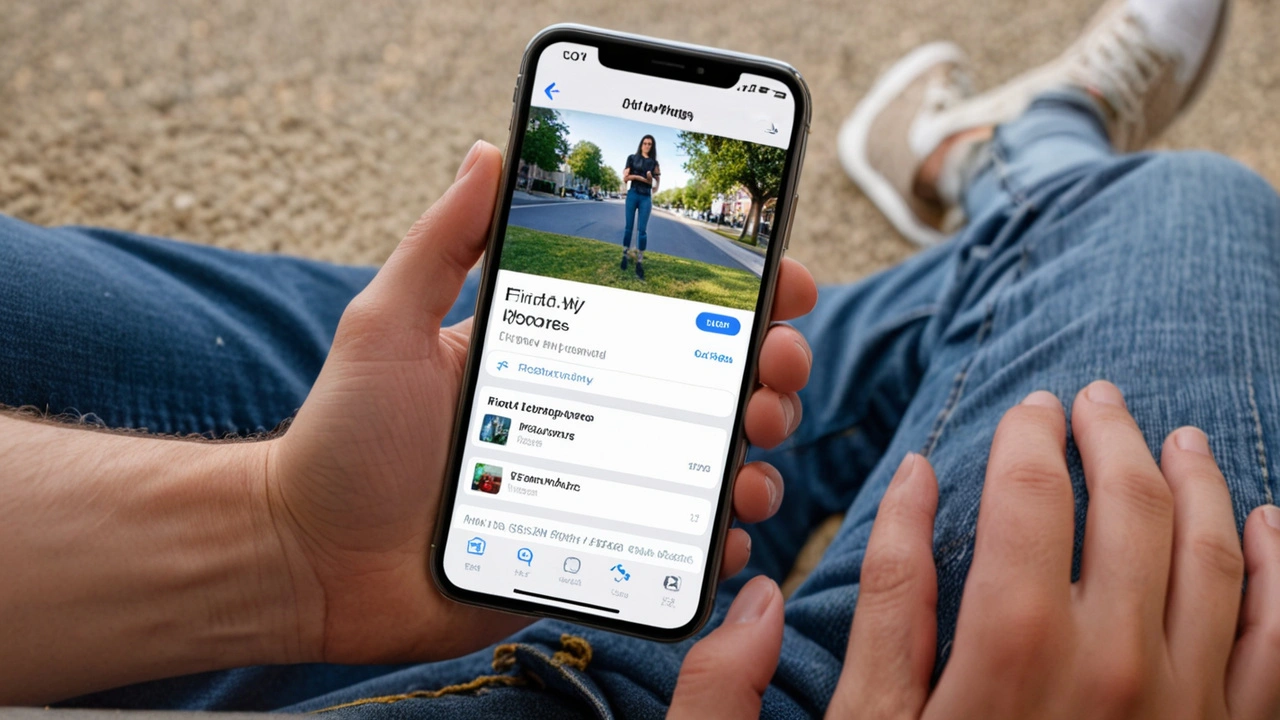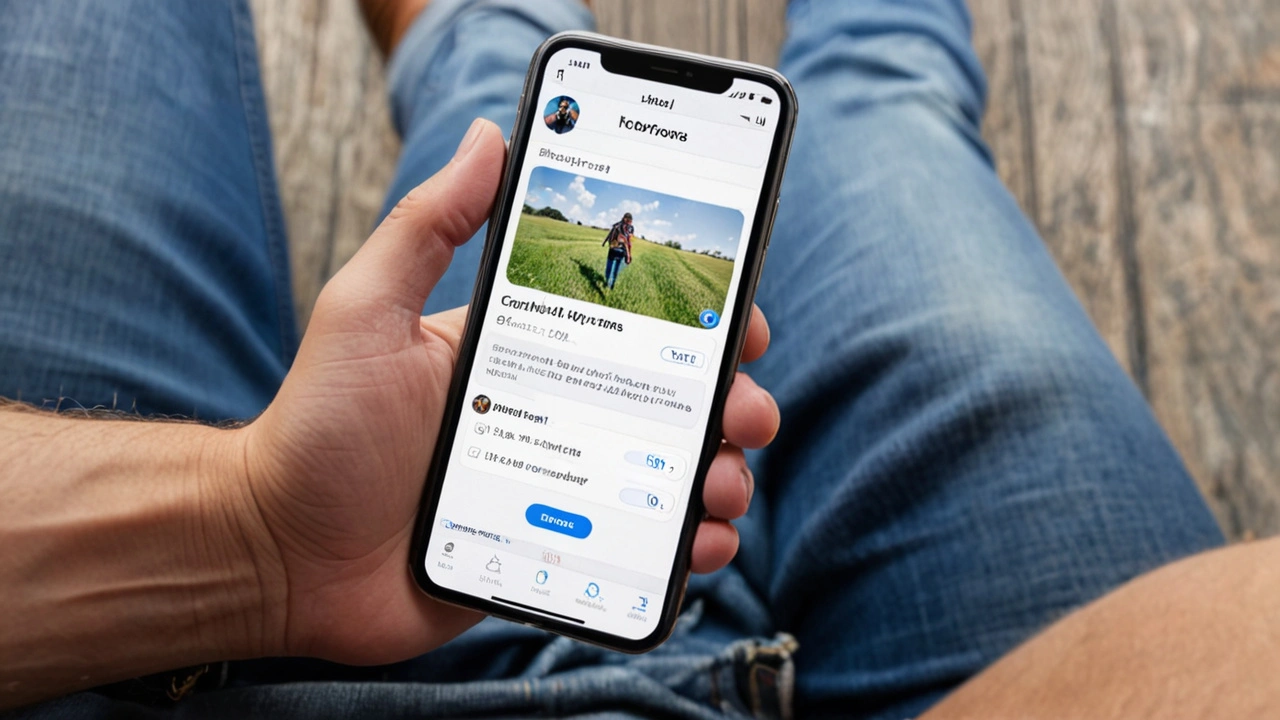The Genesis of 'Find My iPhone': A Brilliant Intern’s Idea
In the world of technological marvels, sometimes the most groundbreaking ideas come from the most unexpected sources. In the case of Apple's hugely popular 'Find My iPhone' feature, that source was an intern. This revelation, shared by Eddy Cue, Apple's Senior Vice President of Services, sheds light on the origin of a tool that has saved countless users from the frustration of losing their devices.
The intern’s brainchild was initially a solution for a common yet critical problem—misplacing or losing gadgets. This was not just a convenience but an essential tool to safeguard expensive technology and personal data. Upon its introduction at the 2009 Worldwide Developers Conference (WWDC), 'Find My iPhone' was restricted to MobileMe subscribers. It offered a simple yet powerful promise: the ability to pinpoint the exact location of one’s Apple device, no matter where it was.
Expansion and Evolution: From MobileMe to iCloud
The true potential of 'Find My iPhone' began to unfold with the advent of iCloud in 2011. Apple brought the feature to the masses, making it available to every user who created an iCloud account. This move significantly broadened its reach, transforming it from a premium service into an integral part of the Apple ecosystem. The feature wasn’t just about finding lost phones anymore; it was about providing users with peace of mind and security.
With iCloud, users could track their devices in real-time, lock them remotely, display messages, and even erase data to protect their privacy. This comprehensive suite of functions ensured that users had multiple options to safeguard their information. Technology enthusiasts and everyday users alike quickly recognized the simplicity and efficacy of Apple's solution.
The Addition of 'Find My Friends': Sharing Location Securely
In 2011, Apple introduced another layer to this increasingly versatile feature: 'Find My Friends'. This innovative extension allowed users to share their locations with friends and family securely. While privacy concerns were initially raised, Apple addressed them by implementing robust controls over who could see a user's location and for how long. Parents found it invaluable for knowing their children's whereabouts, while friends used it for coordinating meetups. The feature turned out to be as practical as it was reassuring.
Using proprietary algorithms and encrypted data, Apple ensured that the 'Find My Friends' extension was both user-friendly and secure. The service laid the groundwork for a more interconnected user experience, where the emphasis was on shared, real-time data rather than isolated functionality.
The Groundbreaking Introduction of AirTags
The evolution of 'Find My iPhone' took another quantum leap forward in 2021 with the introduction of AirTags. This small, button-sized device was designed to help users keep track of non-Apple items, such as keys, wallets, and bags. Using the expansive Apple 'Find My' network, AirTags could be detected by any iPhone, iPad, or Mac nearby, communicating their location back to the owner's device.
This innovative expansion was a game-changer. It reflected Apple’s commitment to extending their ecosystem to every aspect of a user’s life. AirTags used a combination of Bluetooth and Ultra-Wideband (UWB) technology to provide precise location data. The ease of integration and the ability to track virtually anything made AirTags an overnight sensation among Apple users.
Interestingly, the AirTags also demonstrated Apple's creative way of using the extensive network of Apple devices. Each compatible Apple device acted as a node in a vast, secure, and anonymous network to help find lost items. This decentralized tracking method alleviated privacy concerns while delivering powerful functionality.
Eddy Cue’s Reflections on Simplicity and Innovation
Reflecting on the journey of 'Find My iPhone' and its subsequent evolutions, Eddy Cue emphasized the simplicity and innovative spirit that have come to define Apple’s approach. From a single intern’s bright idea to a cornerstone feature now recognized globally, this journey serves as a testament to the company’s forward-thinking philosophy. Apple's consistent focus on user experience and security has undoubtedly set a high bar for the tech industry.
At its core, 'Find My iPhone' and its related features represent Apple's mission to create technology that not only enhances daily life but also provides tangible solutions to real-world problems. The feature's seamless integration into Apple’s ecosystem, coupled with its expanding capabilities, continues to set it apart from competitors.

Conclusion: The Legacy of a Simple Idea
The story of Apple’s 'Find My iPhone' is a compelling narrative about how a simple idea, born from necessity and nurtured by innovation, can transform into a tool that millions rely on daily. What started as a project to help users locate lost gadgets has blossomed into a versatile, indispensable feature that touches almost every aspect of an Apple user's life.
The evolution of this technology—from 'Find My iPhone' to 'Find My Friends' and finally, AirTags—underscores Apple’s relentless pursuit of innovation and user satisfaction. It is a testament to the company’s ability to take an intern’s concept and develop it into a flagship feature that continues to evolve and impress.
As we look forward to future advancements, one thing remains clear: Apple will continue to push the boundaries of what’s possible, driven by the same spirit of simplicity and innovation that characterized the original 'Find My iPhone'. This journey of a single feature encapsulates the essence of Apple’s success and its unwavering commitment to revolutionizing the way we interact with technology.

Alex Soete
July 11, 2024 AT 21:10Wow, that intern’s spark really lit up the whole ecosystem! Apple turned a simple “where’s my phone?” into a whole security suite. Props to the team for scaling it up.
Cara McKinzie
July 28, 2024 AT 03:58i cant beleive nobody told me about this eariler, now i missed my keys again lol
Joseph Conlon
August 13, 2024 AT 10:45When you think about the trajectory of “Find My iPhone,” it reads almost like a case study in product evolution. The original intern’s prototype was, at its core, a very modest location service, but Apple saw beyond the immediate use‑case. By embedding it into MobileMe, they gave early adopters a glimpse of what could become a universal safety net. The subsequent migration to iCloud in 2011 was not just a backend shift; it signaled Apple’s intent to make the feature ubiquitous. Suddenly, every iPhone, iPad, and Mac could be summoned with a single click, and the sense of security grew exponentially. Users began to rely on it not only for lost devices but also as a deterrent against theft, knowing that anonymity was harder to maintain. The addition of remote lock and erase turned the service into a full‑blown privacy shield, something that many competitors still scramble to match. Then came “Find My Friends,” an expansion that blurred the line between device tracking and personal safety, allowing families to keep tabs on each other without sacrificing control. Parents, especially, praised the granular permission settings that let them set temporary visibility windows. The network effect became evident as more devices joined the “Find My” ecosystem, each acting as a node that could relay anonymous pings. With AirTags, Apple brought the concept full circle, applying the same crowdsourced detection to everyday objects that people tend to misplace. The use of Ultra‑Wideband gave a precision previously reserved for professional GPS, and the seamless UI made tagging a breeze. That intern’s initial spark, therefore, ignited a cascade of innovations that have redefined how we think about loss and recovery. It also forced the industry to reckon with the privacy implications of a massive, decentralized tracking network. Apple’s approach-using encryption and anonymity-set a benchmark that many others are still trying to emulate. In hindsight, the story is a testament to how a single idea, when nurtured in the right environment, can ripple outwards and reshape an entire market. Ultimately, it’s not just about finding phones; it’s about building trust in the devices that have become extensions of ourselves.
Mohit Singh
August 29, 2024 AT 17:33Honestly, that whole “innovation” hype feels like marketing fluff-people just want a cheap excuse to keep buying new gadgets. The intern’s idea didn’t magically make Apple better; it just gave them another lock‑in feature. Stop glorifying the backstory and admit it’s a sales trick.
Damian Liszkiewicz
September 15, 2024 AT 00:21It’s fascinating how a single seed of curiosity can blossom into an entire ecosystem that serves billions. 🌍 When we look at the bigger picture, Apple’s commitment to privacy and seamless integration shines through. Every iteration, from iCloud sync to AirTag crowdsourcing, reflects a thoughtful design philosophy. 😊
Angela Arribas
October 1, 2024 AT 07:09Just a quick note: “ecosystem” should be pluralized as “ecosystems” when referring to multiple platforms, and “shines” needs a comma before the conjunction. Also, “crowdsourcing” is a noun, not a verb, so consider rephrasing for clarity.
Sienna Ficken
October 17, 2024 AT 13:57Oh great, another tale about how Apple “saved the day” with a feature that everyone already expects. If I wanted a phone that tracks me, I’d just grab a GPS dog collar. But hey, at least the intern got a mention, right?
Zac Death
November 2, 2024 AT 19:45While I get the cynicism, there’s something genuinely cool about turning a mundane problem-losing a charger or a set of keys-into a community‑powered solution. The folks who built the network probably didn’t sit around thinking about conspiracy theories; they were solving a real pain point. Plus, the fact that even strangers’ devices can help you locate your own stuff without compromising personal data is a neat engineering feat. It’s not just about the brand hype, it’s about the underlying tech that makes urban life a little less chaotic. So, yeah, maybe there’s a bit more to appreciate than just “another Apple buzzword.”
Lizzie Fournier
November 19, 2024 AT 02:33Honestly, this story shows how a little curiosity can lead to massive impact. It’s a reminder that big companies still need fresh eyes. Keep an eye out for the next intern idea-who knows what’ll come next?
JAN SAE
December 5, 2024 AT 09:21Exactly, Lizzie, the point you made-about fresh eyes-highlights a crucial aspect, that innovation often springs from unexpected sources, and it’s something we should all celebrate, because without those perspectives, we’d be stuck in a loop of incremental updates, never breaking new ground.
Steve Dunkerley
December 21, 2024 AT 16:09From a systems engineering standpoint, the integration of Bluetooth Low Energy with the UWB stack in AirTags represents a convergence of heterogeneous protocols, enabling a mesh‑like topology that leverages crowd‑sourced telemetry for asset localization. This paradigm shift not only enhances the signal-to-noise ratio but also mitigates single‑point failure risks inherent in traditional GPS‑centric models. Consequently, the scalability factor improves dramatically, supporting billions of nodes without linear cost escalation. It’s a quintessential example of leveraging distributed computing principles in consumer hardware.
Jasmine Hinds
January 6, 2025 AT 20:10Wow, that’s some serious tech talk! 😲